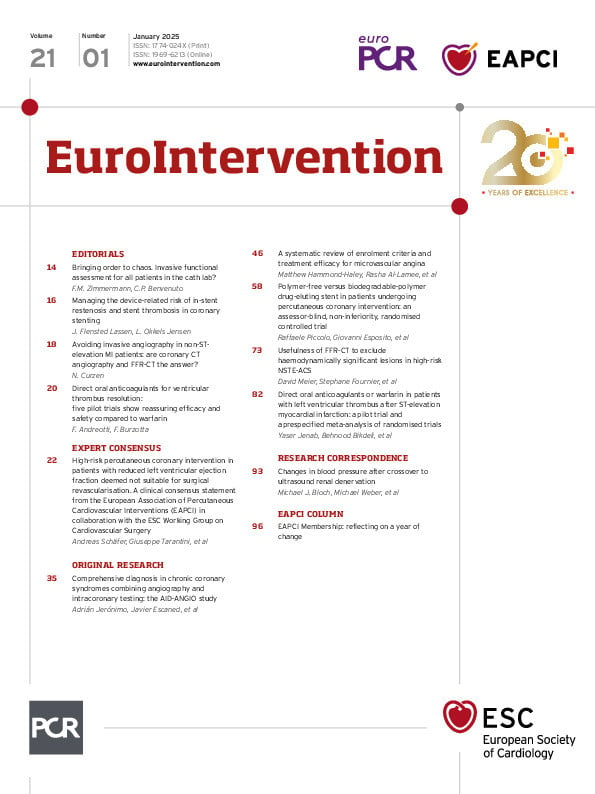Direct oral anticoagulants (DOACs) are easier to use than warfarin1. They are effective and safe in treating venous thromboembolism and in preventing strokes related to most forms of atrial fibrillation (AF)12. DOACs are also recommended for patients with AF and comorbid acute coronary syndromes or undergoing percutaneous coronary intervention (PCI)345. DOACs are contraindicated, however, in patients with thrombotic antiphospholipid syndrome, mechanical heart valves, and rheumatic heart disease, given their lower efficacy and safety compared to warfarin12. For AF associated with end-stage renal disease and – until recently – for left ventricular thrombus (LVT) resolution, the evidence from randomised controlled trials (RCTs) has been insufficient to formulate strong recommendations for or against DOACs2.
LVT after an acute myocardial infarction (MI) can cause devastating embolic strokes36. The incidence of post-infarct LVT has declined thanks to timely pharmacological and mechanical recanalisation that has drastically limited infarct size367. The mechanisms underlying post-infarct LVT formation follow Virchow’s triad and involve ventricular dysfunction and deformation (especially aneurysmatic), flow abnormalities, and prothrombotic/inflammatory reactions in...
Sign up for free!
Join us for free and access thousands of articles from EuroIntervention, as well as presentations, videos, cases from PCRonline.com




